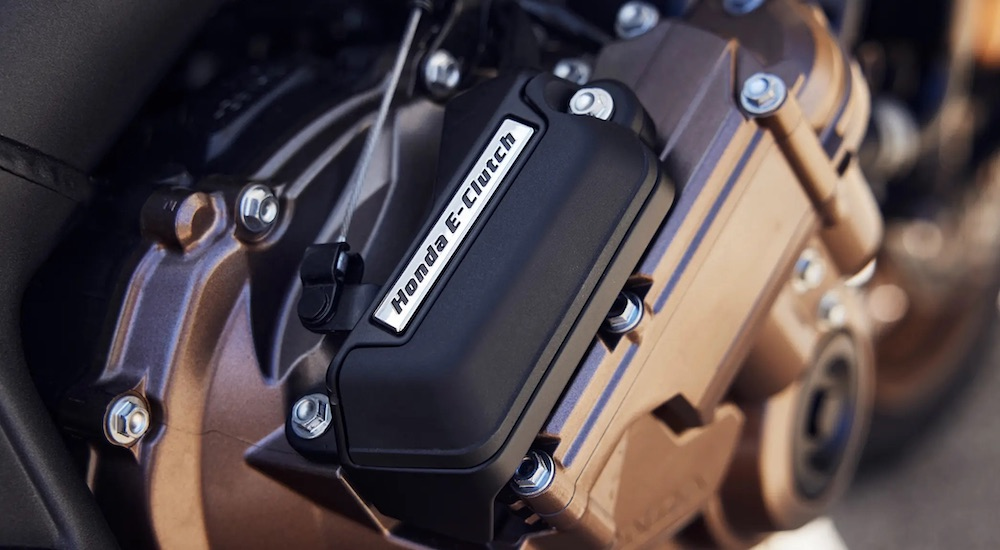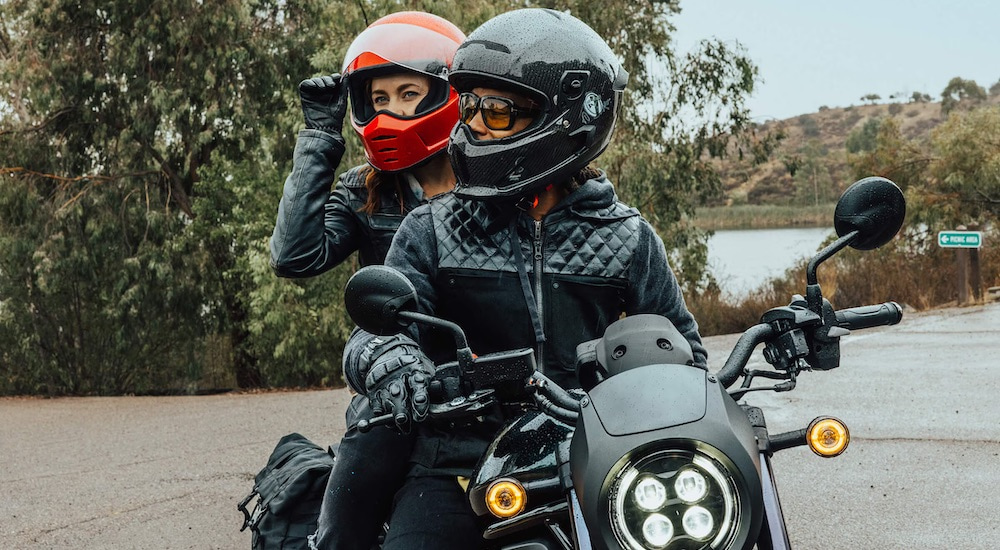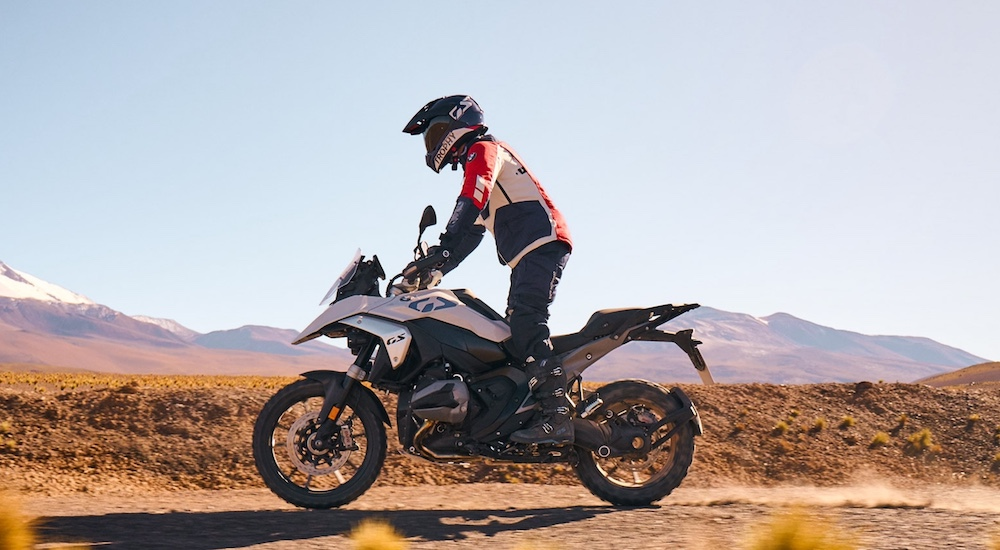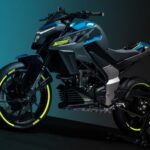Going automatic has long been the predominant drivetrain option among American car drivers. CarMax reports that as of 2020, just 2.4% of new vehicles built for US buyers had a manual transmission. Yet despite the ubiquity of this transmission in cars, it has struggled to catch on among motorcycle riders. Many theories abound, from the unique mechanical requirements to riders just preferring to shift manually. Regardless of the reason, manual motorcycle transmissions still reign as king.
However, when you head to a motorcycle dealer, you may find a compromise: the clutchless transmission. This hybrid option, which attempts to combine the benefits of automatic and manual transmissions, has been around in some form for over 60 years. It has gained momentum recently, with multiple new bike models incorporating this technology from leaders like Honda, Yamaha, and BMW. Given this resurgence of interest, this is an excellent time to examine the clutchless motorcycle, its pros and cons, and what clutchless bikes are available.
What Is a Clutchless Motorcycle?
The clutchless transmission design goes by several names, including automated manual transmission, semi-automatic transmission, and auto-clutch transmission. Under any name, the basic design is the same. It takes a manual transmission and adds actuators that automate the clutch operation while requiring the rider to operate the gear shifts, or at least giving them the option to. Technically, these motorcycles aren’t truly clutchless. They still use clutches, but their engagement and disengagement are automated. Add automatic gear selection, and it is functionally similar to what we know as an automatic transmission. Also note this is different from “clutchless shifting,” which is a technique for shifting a regular manual transmission without using the clutch.
One of the earliest versions of a clutchless motorcycle transmission came in the early 1960s when Jawa Moto developed a bike with an automatic centrifugal clutch. In this design, the output shaft disengages and engages based on the rotational speed. Honda later borrowed this design for the Honda Cub 50 and eventually had to pay royalties to Jawa. Later, on their own, Honda developed the Hondamatic clutchless transmission used in several 1970s and 1980s motorcycles such as the Honda CB750A. This utilized a torque converter hydraulic control valve that engaged the clutch when enough torque was applied.
More recent Honda semi-automatic motorcycles have a dual-clutch transmission (DCT) with one clutch for odd gear sets and another for even gear sets. The computer-controlled clutches work together, and you can allow the computer to shift automatically or use the handlebar switches to override it manually. Suzuki and Yamaha have also developed semi-automatic transmissions over the years.
Pros and Cons of Semi-Automatic Motorcycles
Now that you know a little history of clutchless motorcycles, the question is whether they are the right bike for you. Here are some benefits that clutchless motorcycles provide.
- They are much easier to use since you don’t need to operate the clutch, lowering the barrier of entry for new riders.
- Riders can experience the thrill of changing gears on their terms without worrying about missed shifts and over-revving the engine.
- Semi-automatic bikes make it easier to ride in heavy traffic, and you never have to worry about stalling at a traffic light or stop sign.
- Sensors monitor the rider’s inputs and bike parameters to anticipate the most likely shift (second to third gear, fifth to fourth gear, etc.), making the shifts even smoother.
Of course, there are some drawbacks to clutchless motorcycles as well.
- Semi-automatic bikes tend to be more expensive to buy and maintain because of the added equipment and electronics.
- The add-ons frequently make the bike weigh more, slightly hurting acceleration, top speed, and fuel efficiency.
- There are fewer choices, so you may not be able to find the cruiser, bagger, sport bike, or adventure bike that best suits you.
- Many riders simply prefer to shift gears themselves, just like they always have, and may not like the semi-automatic system no matter how well it performs.
What Clutchless Motorcycles Can I Buy?
Although clutchless bikes aren’t as common as manual transmissions, options are on the rise. Here’s a quick overview of some past, present, and potential future motorcycle models with a semi-automatic transmission, as well as the technologies involved.
Honda DCT
Honda became the first company to offer dual-clutch motorcycles in 2010, eventually expanding DCT technology to bikes such as the NC700, CTX700, and CRF1000 Africa Twin. They updated the technology in 2020 to make it quieter and more responsive. Today, Honda motorcycle models that you can purchase with a DCT include the Africa Twin Adventure Sports ES, Gold Wing touring bike, NC750X commuter bike, and Rebel 1100 cruiser.
Yamaha FJR1300AE/AS
Since 2006, Yamaha has offered YCC-S electric technology on select FJR1300 sport-touring bike models. (They also have it on the YXZ1000R SS UTV.) It uses the same five-speed transmission and clutch as the regular FJR1300 but adds a computer-controlled electronic clutch and gear actuators for clutchless shifting. It has a traditional shift lever by the left foot, but riders can also use a left-handlebar switch where the clutch lever would normally be.
Honda CRF110F, Yamaha TT-R110, and Kawasaki KLX 110R
These are three small dirt bikes with a four-speed semi-automatic transmission. They still have the standard foot shifter but use an automatic clutch. The manufacturers market them as more accessible bikes for young riders. The Honda CRF110F achieves this with an old-school centrifugal clutch, while the Yamaha TT-R110 and Kawasaki KLX 110R have multi-disc wet clutches.
Suzuki FR50 and FR80
These underbone bikes represent Suzuki’s earliest attempts at a clutchless transmission. Manufactured from 1974 to 1983, the three-speed semi-automatic design had heel-toe shifting, meaning that you’d press with the left toe to shift up and with the left heel to shift down. More recently, Suzuki has installed automatic and semi-automatic transmissions on various minibikes, such as the DR-Z50 and DRZ-125.
Can-Am Spyder Roadster
Fans of three-wheel motorcycles also can get a clutchless design if they want it. When Can-Am debuted the Spyder in 2007, it had a choice of a manual or semi-automatic transmission. Since 2020, all models are semi-automatic. Riders use a left-hand paddle-shifter for manual upshifts, and the transmission downshifts automatically, though you can manually downshift as well if you prefer different shift points.
Honda E-Clutch
More recently, Honda introduced their new E-Clutch technology. It’s simultaneously a throwback to the Hondamatic semi-automatic transmission of the 1970s and a massive step forward with added features like launch control. Furthermore, because the clutch still has a mechanical linkage, you can turn the computer off and operate it like a regular manual transmission. The first wave of Honda E-Clutch-equipped motorcycles introduced for the 2024 model year includes the CB650R standard bike and CBR650R sport bike. More motorcycles may get the treatment going forward, though Honda has been tight-lipped as to which.
BMW Automatic Shift Assistant
The automotive conglomerate BMW has also gotten in on clutchless motorcycles with the Automatic Shift Assistant (ASA) transmission. BMW refers to this as the “logical and technical evolution” of their previous BMW Motorrad Shift Assistant Pro. This allowed clutch-free upshifts and downshifts but still required clutch control when stopping and starting. The ASA uses two electromechanical actuators on a six-speed manual transmission for precise control at all phases of clutch operation. Like Honda’s DCT bikes, you can operate with manual or automatic shifting (called “Dynamic Mode”). In May 2024, Cycle World reported the BMW R 1300 GS would be the first motorcycle with the ASA transmission. It remains to be seen which other models will get this design.
Going Clutchless on Your Motorcycle
A clutchless motorcycle is a great option for inexperienced riders, city riders, and those who want to relax and ride and focus on the ride ahead without constantly operating a clutch lever. More than anything, the word I keep coming up with when looking at semi-automatic motorcycles is “fun.” By being able to control your shift points for maximum acceleration or efficiency yet not needing to time it with the clutch, you can spend more time enjoying the moment. Recent offerings have made it clear that motorcycle manufacturers are invested in clutchless technology. I can’t wait to see if it finally catches on at a large scale.






